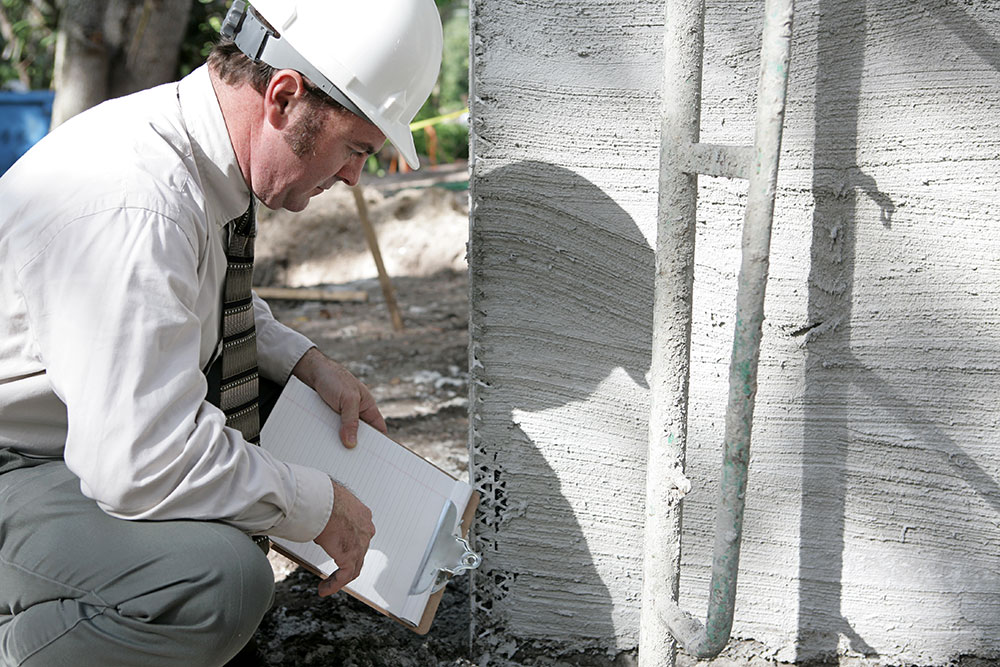There are 4 steps to a foundation inspection:
1. There is a pre-inspection interview.
2. There is an examination of the exterior and interior.
3. The floor is inspected.
4. The data collected is analyzed and interpreted.
There are times when an inspection is necessary:
1. Mandated by law.
2. When buying a home.
3. When getting house remodeled or renovated.
4. When the foundation might be damaged.
A Structural Engineer does the inspection, and determines if the house is strong, sturdy, and stable. Areas in the foundation are checked for leaning and/or bulging. The walls of the foundation of the home need to be level. A thorough inspection takes about 2 hours.
There are multiple signs of a defective foundation:
1. Crumbling concrete.
2. Cracks.
3. Building materials breaking down.
4. Fissures.
5. Cracking drywall.
6. Bouncing floors.
7. Brick and mortar joints cracking.
8. The house is leaning.
9. Basement floors and walls are cracking.
10. Leaning chimney.
Any damage that is found gets recorded, to determine what needs to be done. The Certified Foundation Repair Specialist, The National Foundation Repair Association, and Acculevel are the go-to companies. They use the following materials to support and repair foundations:
1. Helical Piers.
2. Tie-backs.
3. Wall anchors.
4. Carson Fiber Straps.
Other services that Foundation Repair Companies offer are as follows:
1. Foundation Pierring.
2. Foundation underpinning.
3. Foundation Replacement.
4. Block Wall Replacement.
5. A Poured Basement.
6. A wall replacement.
7. A Structural Beam replacment.
8. Joist, sill plate, and band boards repair.
9. And sometimes you are better off just getting a whole new foundation.
The safety of a home is as reliable as the foundation that it rests on. A foundation in disrepair makes for a dangerous home to be living in. Foundation work cannot be ignored. There are plenty of warning signs. what is a foundation? It is the main structure that a house or any building rests upon. A trained professional is really the only one who knows what to do. They are the experts on what to do, what to look for, and how to fix it. They provide an accurate assessment, and then they give advice.
There are several reasons that a home might suffer structural damage:
1. The ground it is built on becomes unsteady.
2. The age of the home and natural wear and tear.
3. Uneven weight distribution.
For anyone who wants to shop around for home inspection estimates, there are simple steps to take online if they so choose:
1. Enter zip code of residence or place of business.
2. Describe what needs to be done.
3. Get various quotes from several companies, and see which one is the best.
One major sign of foundational damage is water damage. If the ground doesn't have good drainage, and there are standing puddles around the building, that could be a problem. Poor drainage can cause intense foundational damage if left unchecked. Moisture and mold in a basement is also a warning sign. This indicates standing water somewhere.
There are other warning signs:
1. The windows and doors won't close right.
2. The supportive beams are leaning.
3. The floors bubble, slope, and buckle.
4. Leaning and bulging in the walls.
5. There is crumbling concrete in the foundation.
6. There are cracks in the flooring of a staircase.
7. There are ruptures and splits in the walls.
8. Cracks that are wider at the bottom than at the top.
9. Yard that goes from wet to dry too quickly.
Not only is foundational damage unsafe, it is also unattractive.
